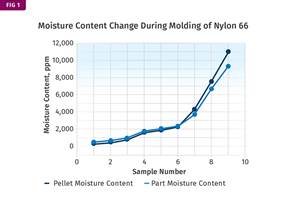Meat and Poultry Film Market Outlook; Where’s the Growth?
Stagnant population growth has stymied growth a bit in what is clearly a very high-tech film extrusion market.
We’ve reported on stretch film, t-shirt bags, institutional can liners , consumer can liners, shrink film, produce film, pouches, agricultural film and converter film in previous installments of this blog series, which provides snap shots of the results of 2017 research conducted by market-research firm Mastio & Co., St. Joseph, Mo. on the PE film industry. Here, we look at its analysis of meat and poultry film.
Total PE resin consumption in 2017 for meat and poultry packaging reached approximately 609 million lb, according to Mastio’s research, and the market is projected to increase at an average annual growth rate (AAGR) of 3.7% through the year 2020, reaching a PE resin consumption level of 679.1 million lb. PE film currently dominates the meat and poultry packaging market. Polyvinylidene chloride (PVDC) films, laminations, and coextrusions are also typically used in the institutional and retail prepackaged meat and poultry market.
Mastio profiled 32 producers of PE film for the meat and poultry market. The top three PE film processors in the meat and poultry market were Sealed Air Corp. (Cryovac Div.); Bemis Co.; and Winpak Ltd. Collectively, these three companies produced approximately 331 million lb of the meat and poultry PE film, accounting for more than 54% of the market.
MATERIAL TRENDS
Mastio notes LLDPE continues to be the most prevalent in this market because it offers better downgauging capabilities than does LDPE. Film processors in the meat and poultry film market utilized all grades of LLDPE resins including LLDPE-butene, LLDPE-hexene, LLDPE-super hexene, LLDPE octene, and mLLDPE.
The consumption of mLLDPE has increased because it is more tear resistant, has good puncture resistance, good impact properties, and sealability. mLLDPE is the highest grade of LLDPE due to its superior strength allowing further film downgauging, thus reducing costs and source reduction to landfills. Specific types of PE resins and film configurations are used in meat and poultry film for specific packaging requirements. Meat barrier bags for beef are typically comprised of a three-layer coextruded structure of LDPE-EVA copolymer/PVDC/LDPE-EVA copolymers.
Offal products, such as liver or sweetbreads, are typically packaged in a LDPE non-shrink PE bag, Mastio’s research reveals. The primary purpose of the bag is to protect the organs from freezer burn. The majority of pork is also packaged in PE non-barrier bags made of LDPE and LLDPE film. Processed pork is often packaged in barrier bags with a high LDPE-EVA copolymer resin content.
Poultry bags for turkey are typically constructed with a three-layer coextruded structure of LDPE-EVA copolymer/LLDPE/LDPE-EVA copolymer resins. The LDPE-EVA copolymer layers give the bag clarity, sparkle, an improved printing surface, and the inner layer of LLDPE provides additional strength.
In the past, a few processors utilized LDPE-ethylene acrylic acid copolymer (LDPE-EAA copolymer), also referred to as ionomer (Surlyn supplied by DuPont). LDPE-EAA copolymer has high seal strength, low temperature heat seals, transparency, high shrink force at low temperatures, reduced leakage rate, and outstanding puncture, abrasion, and tear resistance. LDPE-EAA copolymer was typically coextruded with LDPE-EVA copolymer, LLDPE, nylon, and PVDC.
Furthermore, some companies have also replaced LDPE-EAA copolymer resin with mLLDPE resin because it is less expensive. mLLDPE resins offer clarity, downgauging, seal strength and toughness while maintaining nearly the same processability of LDPE, and the grease resistance equivalent to ultra low density PE (ULDPE).
High molecular weight-high density PE (HMW-HDPE) and medium molecular weight-HDPE (MMWHDPE) resins are occasionally utilized for meat and poultry applications due to its strength and excellent barrier properties.
Nylon and EVOH copolymer are used along with PE resin for meat and poultry packaging. Nylon is used as a barrier resin for hermetic seal (no leaks), temperature resistance, and oxygen migration. EVOH copolymer resin is used as the inner layer of coextruded meat and poultry bags, providing superior oxygen and gas barrier properties while keeping out odors. Other resins reported included PE-based adhesive resin (tie-resin), PVDC, and very LDPE (VLDPE). PVDC films include ease of use, clarity, and low cost.
FILM TECHNOLOGY TRENDS
PE film for meat and poultry packaging was produced by the blown film and cast film extrusion processes and consisted of monolayer and multi-layered coextruded structures. According to the Mastio study, roughly 87% of meat and poultry film is produced via blown film.
Coextruded film remains the dominant structure used to manufacture meat and poultry film. More than 89% of the film produced for this market was of the multi-layer variety. Most companies typically coextrude three or five layers; however, some companies have the capabilities to coextrude two to 14 layers of PE film. Coextruded film structures offer additional barrier properties that monolayer films can’t provide. Highly layered films are tailored to create specific levels of barrier properties for meat and poultry packaging; keeping oxygen or ultraviolet (UV) light out and flavors in. A common seven-layer coextruded film structure produced for meat and poultry consists of outer PE layers followed by tie-layers, adhering the nylon layers and incorporating a middle layer of EVOH copolymer resin.
MY TWO CENTS
Most processors view this as a fairly pedestrian market due to a stagnant population growth. But meat poultry film is clearly on the high end of the technology scale. Those who are seeing growth—albeit modest—are investing in new technology at the expense of those running older lines.Related Content
Resins & Additives for Sustainability in Vehicles, Electronics, Packaging & Medical
Material suppliers have been stepping up with resins and additives for the ‘circular economy,’ ranging from mechanically or chemically recycled to biobased content.
Read MoreTracing the History of Polymeric Materials: Aliphatic Polyketone
Aliphatic polyketone is a material that gets little attention but is similar in chemistry to nylons, polyesters and acetals.
Read MoreThe Fantasy and Reality of Raw Material Shelf Life: Part 1
Is a two-year-old hygroscopic resin kept in its original packaging still useful? Let’s try to answer that question and clear up some misconceptions.
Read MoreWhat's the Allowable Moisture Content in Nylons? It Depends: Part 2
Operating within guidelines from material suppliers can produce levels of polymer degradation. Get around it with better control over either the temperature of the melt or the barrel residence time.
Read MoreRead Next
Why (and What) You Need to Dry
Other than polyolefins, almost every other polymer exhibits some level of polarity and therefore can absorb a certain amount of moisture from the atmosphere. Here’s a look at some of these materials, and what needs to be done to dry them.
Read MoreHow Polymer Melts in Single-Screw Extruders
Understanding how polymer melts in a single-screw extruder could help you optimize your screw design to eliminate defect-causing solid polymer fragments.
Read More
























